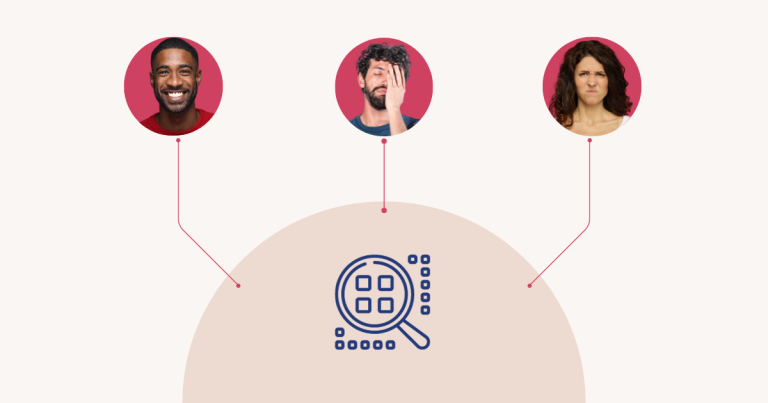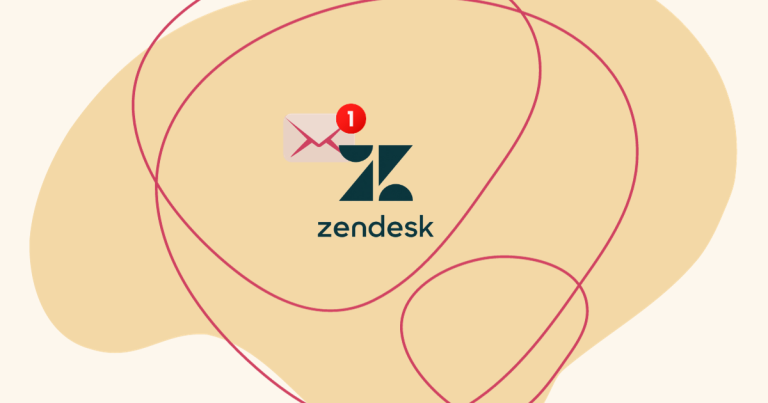Andrea Penta’s journey from community organizer to Quality Program Lead at FCP Euro has provided her with unique insights and a passion for enhancing customer satisfaction. In this interview, we delve into the world of customer-centricity. Discover Andrea’s perspectives on the importance of empathy, data-driven innovation, and proactive problem-solving in customer experience transformation.
Can you tell us a bit about your journey and how you ended up working in CX?
During my time in college, my first job was as a community organizer. I would go door-to-door, encouraging people to contribute to campaigns and write letters to their senators. After one of the campaigns, I found myself in need of a job, and that’s when I learned about a call center opportunity. This particular call center focused on selling car parts for German and Swedish cars. Having transferable skills from my community organizing experience, such as confidence in conveying information and ensuring customers understood, I decided to give it a try. I worked at that call center for about 5-6 years before moving on to a different company in a similar role.
At the new company, FCP Euro, I work in the service department. I have been with the company for four years. My first position was a frontline role, answering phone calls and dealing with various customer issues. This was a transition from a sales-oriented job to a more service-oriented one. Instead of solely closing deals, I focused on ensuring customer satisfaction and problem-solving any issues the customer might be experiencing. This shift in perspective was refreshing, and it made me realize the need for a quality program in the call center. In my previous call center, success was measured by sales, but here, we needed a way to objectively measure performance.
That’s when I moved into a quality assurance role on the customer service side. I developed a rubric for quality audits to ensure a more objective assessment of performance. It was important to quantify excellence in a way that went beyond subjective opinions. My expertise lies in transforming aspects of customer service into measurable numbers, providing valuable insights for improvement.
What are the aspects of your job that you find most appealing and have motivated you to remain in this career? Specifically, what do you enjoy the most about working in the service industry?
The nature of my job is what I find most captivating. Each interaction is unique, like a puzzle waiting to be solved. There’s an element of unpredictability, not knowing what each call will entail or what challenges I may encounter. This sense of excitement drives me, and I genuinely enjoy the opportunity to solve problems and provide assistance. It may sound cliché, but it’s true – I derive satisfaction from helping people. In every service-oriented role, there’s that spark of fulfillment when the problem is resolved.
What do you perceive as the primary challenges in the CX industry, particularly in terms of service?
Maintaining a human element is a significant challenge in this industry. Sometimes, with the pressure to handle more tasks or manage high call volumes, it’s easy to forget that there are real people on the other end of the line. It’s crucial to constantly remind ourselves of this fact and prioritize empathy, understanding, and conveying a human touch across various communication channels, which include email and chat. Balancing the need for efficiency and volume while meeting people’s high expectations for exceptional service presents additional difficulties. We must strive to fulfil all these demands while still being authentic humans ourselves and maintaining professionalism in our interactions.
What does your day-to-day work look like? Could you provide insights into your work routine, including the metrics you monitor and how you collaborate with your team?
I work closely with the team leads in our customer service department which consists of five teams divided based on different channels. We have three phone teams, a ticket team, and a chat team. Each channel has its own quality rubric for assessment. Every week, the team leads manually audit 10 reviews per customer service agent. It’s my responsibility to analyze the data and schedule one-on-one sessions with team members to identify areas for improvement.
Additionally, I handle service recovery. When we receive reviews rated one to three, I reach out to the customer to address their concerns, provide explanations, and assure them that we’re rectifying the situation. Mistakes happen, and it’s crucial to demonstrate accountability and show customers how we’re resolving their issues. This feedback loop not only helps the customers but also aids in educating the customer service agents on what should have been done differently.
It can be cringe-worthy to listen to calls at times, but it’s also endearing because it fosters a supportive environment where agents can learn from their mistakes. Building rapport with the team and letting them know that making mistakes is okay is essential. After all, I once accidentally said “I love you” to a customer before hanging up, so if anyone understands making mistakes, it’s me.
How does technology assist you in your work and make your life easier? Could you share the tools you utilize and elaborate on how you ensure increased efficiency and productivity through the use of technology?
Our CRM system allows us to handle tickets, phone calls, and emails. It provides us with valuable data on the performance of customer service agents. We can track metrics such as the number of tickets resolved, the number of interactions needed to solve an issue, missed calls, and answered calls.
Using this technology, I gain a comprehensive understanding of each customer service agent. For example, if I see that an agent wasn’t online for the required hours during the week, it explains why they may have answered fewer calls and missed their targets. Similarly, if the average handle time is high, it alerts us to potential issues in call control and conversation management that could impact performance.
Overall, technology makes my job easier by providing real-time insights into how agents are performing. While we don’t use invasive technologies like screen capture, we focus on metrics such as customer satisfaction (CSAT), average handle time, first response time for chats, and overall interaction duration. These numbers help us identify areas for improvement and understand customer interactions more deeply.
Technology also helps us maintain a high-quality level of service with a distributed workforce. It’s amazing how we can streamline and maintain service quality by collaborating with outsourced companies and partners across the world. Working with people from different parts of the globe and still delivering consistent information and a human touch to our customers is impressive. It’s intriguing to see the human element maintained in our company, even with the use of technology.
How is the visibility of metrics provided to the agents regarding their own performance? Do they have access to these metrics themselves, or is it managed by someone else? How does this system work?
At the beginning of each week, the agents receive an automated email from the data team. This email provides them with all their performance statistics and compares them to the team’s targets and top performers. For example, if an agent sees that they answered 150 calls in a week while the best performer answered 205, it is our hope that it motivates them to improve their performance. The email also adds a fun competitive aspect to the metrics. They become motivated to catch up to their friends and surpass their performance. It’s important to note that these emails are sent weekly, so it’s not overwhelming for agents to receive daily reminders. It’s also taken into account if an agent had PTO or other factors that may affect their performance. The purpose of providing this visibility is to ensure that agents are aware of their performance and that their reviews become a constructive conversation rather than a surprise.
What advice would you give to someone who is just getting started and wants to pursue a career in this field for the long term?
I believe one of the initial things to mention is the importance of regulating your emotions when starting out in this field. While it’s essential to grasp the technical aspects of the job, such as navigating systems and locating information, it’s equally crucial to learn how to de-escalate customer interactions and recognize when your stress levels are rising. Taking a moment between calls to breathe and compose yourself can make a significant difference in navigating through challenging situations.
Another piece of advice is to be mindful of time management. If you find yourself overwhelmed and unable to focus on multiple tasks simultaneously, it’s beneficial to prioritize and address the most urgent matters first. By pausing other tasks temporarily and focusing on what requires immediate attention, you can maintain a more effective workflow.
AI is advancing rapidly, and its impact on customer service is significant. How has it already assisted you in your work, and what do you believe are the most promising opportunities for further AI development that would enhance your productivity and efficiency?
We have a bot on our website that directs customers to self-service options. It’s been quite helpful for us. We’ve also been exploring the use of artificial intelligence to guide customers to relevant knowledge base articles and FAQs on our web pages. I haven’t delved deep into AI specifically for quality assurance, but I know there are ways to analyze different types of interactions. There are AI tools available that can automate quality assurance evaluations based on specific parameters and decision trees.
Implementing AI in my role would greatly assist in handling more complex and human-centric issues, such as addressing problematic orders or situations where emotions come into play. It would be valuable for coaching purposes and enhancing the work of our quality assurance professionals. I’ve even come across instances where IT prompters provide real-time assistance during calls. They can discreetly whisper suggestions or reminders, which I find amazing.
Considering your role and department, how does it align with the future objectives of your company? Are you gaining or losing priority or space?
So, the vision of our company is to become the world’s most trusted source for European vehicle ownership, maintenance, and repair. For us, customer service and experience are at the heart of this vision. When you reach out to us, you can be confident that you’re speaking to enthusiasts who truly understand cars, your vehicle, and share your passion. We pay attention to who we’re talking to and strive to create personalized interactions.
It’s really exciting to work for a company that values the importance of customer experience. By ensuring a positive customer experience and making sure that every interaction, whether it’s through phone, email, or chat, we reflect the fact that we are real people is crucial. Our goal is to provide the right answers to our customers, even if we don’t have them at the tip of our tongues. We are committed to finding the information they need and delivering it promptly.
To answer your question about gaining or losing space, investing in our people is a fundamental aspect of our company’s approach. I am maintaining my space, continuing to work with our customer service team, reminding them to remain cool, calm and collected, and most importantly, human.

Andrea Penta
Andrea Penta is a dedicated Quality Program Lead with a strong background in the automotive industry. With experience in nonprofit organizations, event planning, customer service, public speaking, and fundraising, Andrea brings a diverse skill set to her role. After working on the frontline, Andrea transitioned to a quality assurance role, devising a comprehensive rubric for conducting performance audits. Andrea’s passion lies in transforming the customer service experience into tangible numbers. With her expertise, she continuously strives to enhance operational performance and exceed customer expectations.
Did you like the post?
You might also like:

Surveypal
Everything you need to lead and improve your customer experience. Learn more at surveypal.com, or






